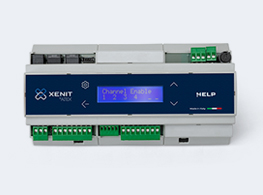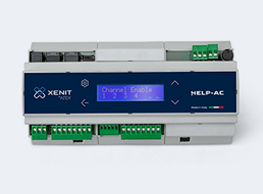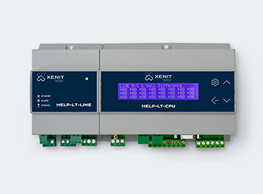Why monitor
power lines?
Power lines carry energy and information but they are very vulnerable and prone not only to degradation but to the theft of the copper and aluminium cables.

Monitoring of AC, DC
and non-connected power lines
Why it is important to make power lines safe
The electrified lines – such as those in AC, DC or non-connected lines – have the task of transporting energy and information, through:
- underground cable ducts;
- concrete channels;
- overhead lines.
However, these environments are vulnerable and have been subject to increasingly frequent copper thefts in recent years.
For this reason, it is now necessary to be able to check the integrity of electrified lines and monitor their energy efficiency.
The phenomenon of copper cable theft
National Observatory for Copper Theft
The theft of copper cables is now an international problem, mainly affecting the transport, energy, telecommunications, service and technology industries.
To monitor and counter such trends, in 2012 the Ministry of the Interior set up the National Observatory for Copper Theft, with the aim of creating a network between:
- Law Enforcement agencies,
- Customs and Monopoly agencies,
- Italian State Railways, Anie, Enel, Telecom Italia, Vodafone, Wind and Confindustria.
The theft of copper, just like any fault within the electrified lines, can remain undetected and thus degenerate or can be detected after too long a time to be able to contain the damage.
Effects of copper cable theft
Technical and economic damage
The theft of copper cables causes damage of a technical nature, hence on plant engineering, and also economic damage. Nonetheless, harm can be avoided if action is taken preventively and effectively.
The main consequence of the theft of copper cables is the interruption of the power supply for:
- industrial utilities;
- street lighting;
- railway and motorway signs;
- renewable energies;
- telephone lines and transmission cables.
All this creates numerous inconveniences, putting people’s safety at risk.
Another effect of copper theft, in terms of the relevance, is the absence of monitoring energy efficiency and control of the loads of the electrified lines, which decreases the quality of services and impedes the optimisation of consumption.
Every year, the theft of copper cables from electrified lines costs over 10 million euro. And this figure refers only to Italy!
The consequential damages – that is, those concerning the shutdown and restoration of the installations – far exceed the value of the assets.
There is also a problem with insurance. Generally, the theft of copper cables is not covered by insurance.
This is because the electrical conductors are often located outside the system, hence in a place considered unsafe. Yet, insurance coverage is possible when the system contains electronic devices with a high intrinsic degree of safety for signalling the presence of power lines.
HELP by![]()
The effective solution to the problem of copper cable theft
To solve the problem of copper cables being stolen, XENIT has created the HELP range of products.
HELP is an advanced control system for monitoring the presence and efficiency of:
- DC and AC power lines;
- communication networks;
- power lines that are not yet connected.
Furthermore, for particular applications, XENIT personalises the products in the catalogue and can even develop ad hoc products in order to render the devices adaptable to any system and request of the customer.
HELP systems, which can be integrated with IoT (Internet of Things) services, make it possible to utilise and share information, as well as to initiate predictive actions for Smart & Green cities.
Would you like a consultation?
Allow us to help you




